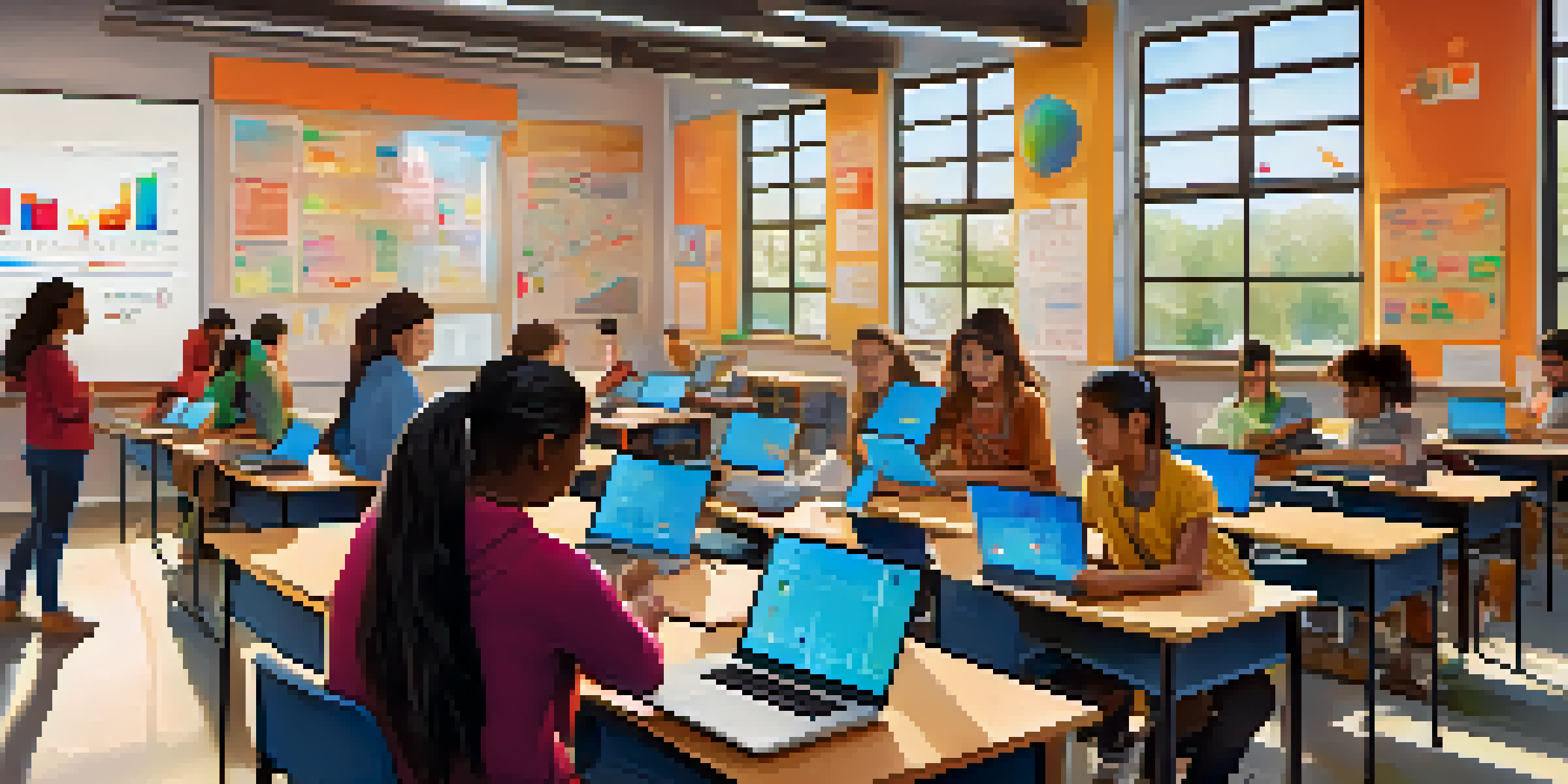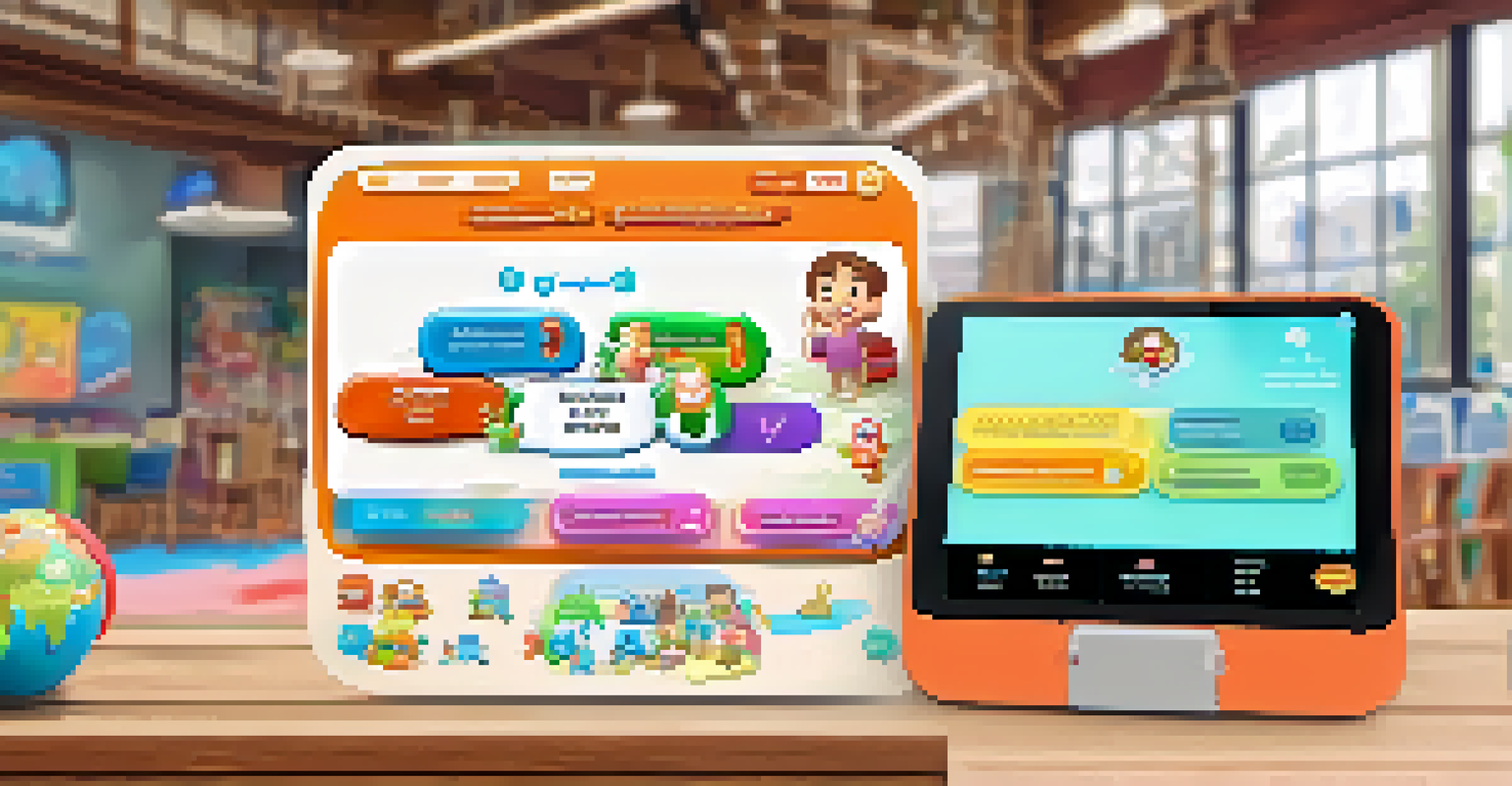NLP for Language Learning and Education Tools

Understanding NLP and Its Role in Language Learning
Natural Language Processing (NLP) is a branch of artificial intelligence that helps computers understand, interpret, and respond to human language. In the context of language learning, NLP can analyze learners' speech and writing, providing valuable feedback that aids in their progress. For instance, tools like speech recognition software can identify pronunciation errors, allowing learners to correct them in real-time.
Technology will not replace teachers, but teachers who use technology will replace those who don’t.
Moreover, NLP-powered applications can tailor their content based on individual learning styles and progress. This personalization keeps learners engaged and motivated, as they receive practice that is relevant to their needs. Imagine a virtual tutor that adapts its lessons after analyzing your strengths and weaknesses—this is precisely what NLP offers.
By automating routine tasks like grading and feedback, NLP allows educators to focus more on teaching and less on administrative burdens. This not only enhances the educational experience for students but also fosters a more interactive and dynamic learning environment.
Personalized Learning Experiences with NLP Tools
One of the most exciting aspects of NLP in education is its ability to create personalized learning experiences. For example, language apps can analyze a learner’s progress and suggest tailored exercises that address specific weaknesses. This customization means that no two learners have the exact same experience, making the learning journey more effective.

Additionally, NLP-enabled tools can assess reading comprehension by evaluating how well a learner understands text. By asking questions and analyzing responses, these tools can gauge a student's grasp of vocabulary and context—ensuring that learning is not just about memorizing words but truly understanding their usage.
NLP Personalizes Language Learning
Natural Language Processing tailors educational content to individual learners, enhancing engagement and effectiveness.
Imagine trying to learn a new language with a tutor who knows your exact challenges and preferences. That's the power of personalized NLP tools—they adapt to your learning pace and style, making the process smoother and more enjoyable.
Enhancing Vocabulary Acquisition Through NLP
Vocabulary acquisition is a crucial aspect of language learning, and NLP plays a vital role in this area. With tools that analyze word usage and frequency, learners can be presented with words that are most relevant to their interests or goals. This targeted approach makes it easier to remember and apply new vocabulary in real-life situations.
The limits of my language mean the limits of my world.
For instance, NLP applications can generate flashcards based on a learner's previous interactions, emphasizing words that they struggle with. By utilizing spaced repetition algorithms, these tools can optimize the timing of vocabulary review, ensuring that learners retain information more effectively.
Moreover, NLP can provide contextual examples of how a word is used in sentences. This exposure to real-world applications helps learners understand nuances and connotations, enriching their language skills beyond rote memorization.
Real-Time Feedback for Speaking and Writing
One of the standout features of NLP technology is its ability to offer real-time feedback on speaking and writing. Language learners can practice their pronunciation using speech recognition tools, which provide instant corrections and suggestions. This immediate response helps learners adjust their speech patterns without having to wait for a teacher's input.
In writing, NLP tools can analyze text for grammar, style, and coherence, offering constructive feedback on how to improve. This is akin to having a writing coach available 24/7, providing guidance that helps learners refine their skills over time.
Real-Time Feedback Accelerates Skills
NLP provides instant corrections in speaking and writing, boosting learners' confidence and promoting faster language acquisition.
The real-time aspect of feedback not only accelerates the learning process but also builds confidence as learners can see their progress instantly. This immediate reinforcement encourages them to practice more frequently, leading to faster language acquisition.
Engaging Language Learning Games Powered by NLP
NLP isn't just about serious study; it can also make language learning fun! Many educational platforms now incorporate gamification elements powered by NLP, turning learning into an interactive experience. These games can adapt based on a player's skill level, ensuring that challenges are both engaging and achievable.
For example, language learners might engage in chat-based games where they converse with AI-driven characters. These characters use NLP to understand context and respond naturally, creating a dynamic environment that mimics real-life conversations.
By incorporating game mechanics—like points, levels, and rewards—NLP-driven tools can motivate learners to practice more and maintain a consistent study routine. Learning a language becomes less of a chore and more of an enjoyable adventure.
Overcoming Language Barriers with Translation Tools
Another significant application of NLP in language learning is its ability to break down language barriers through translation tools. These tools utilize advanced algorithms to provide accurate translations, making it easier for learners to comprehend foreign languages. This can be especially helpful for beginners who might feel overwhelmed by the complexity of a new language.
For example, a language learner can input sentences into a translation app and receive not only the translation but also explanations of grammar and usage. This dual approach enhances understanding and helps learners grasp the intricacies of the language they are studying.
Gamification Makes Learning Fun
NLP-powered games create an interactive learning environment, motivating students to practice language skills in an enjoyable way.
Moreover, NLP can facilitate cross-cultural communication, allowing learners to connect with native speakers. This interaction fosters a deeper understanding of cultural contexts, enriching the overall language learning experience.
The Future of NLP in Language Learning and Education
As technology continues to evolve, the future of NLP in language learning looks promising. With advancements in machine learning and artificial intelligence, we can expect even more sophisticated tools that provide deeper insights into learners' progress. This means that educators will have access to data-driven strategies that can inform their teaching methods.
For instance, future NLP applications may integrate virtual reality, allowing learners to immerse themselves in simulated environments where they can practice language skills. This immersive experience can significantly enhance the retention of vocabulary and conversational skills.

Ultimately, the integration of NLP in language learning tools not only makes education more accessible but also more engaging. As we embrace these innovations, we can look forward to a world where learning a new language is an exciting and enriching journey.